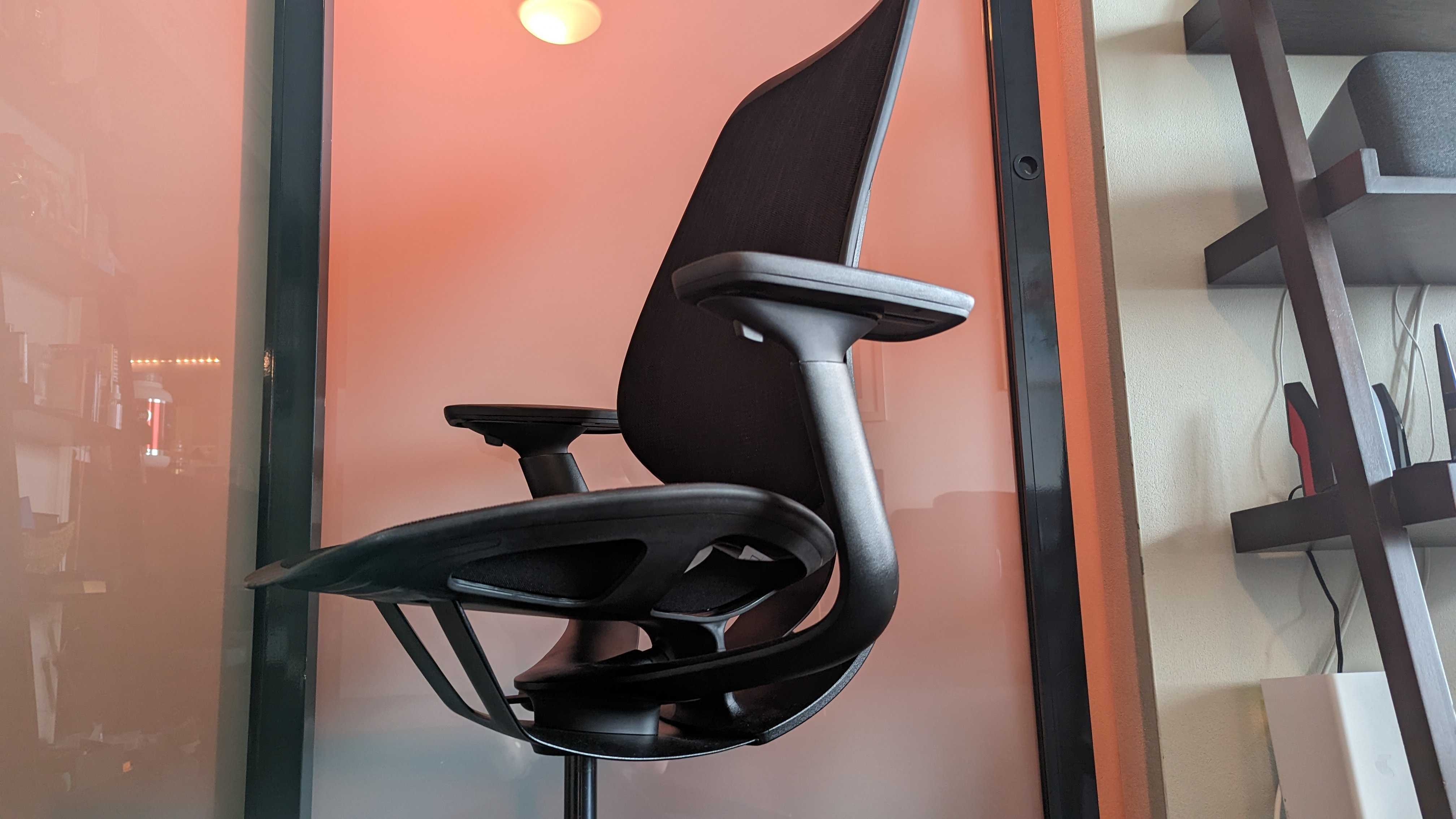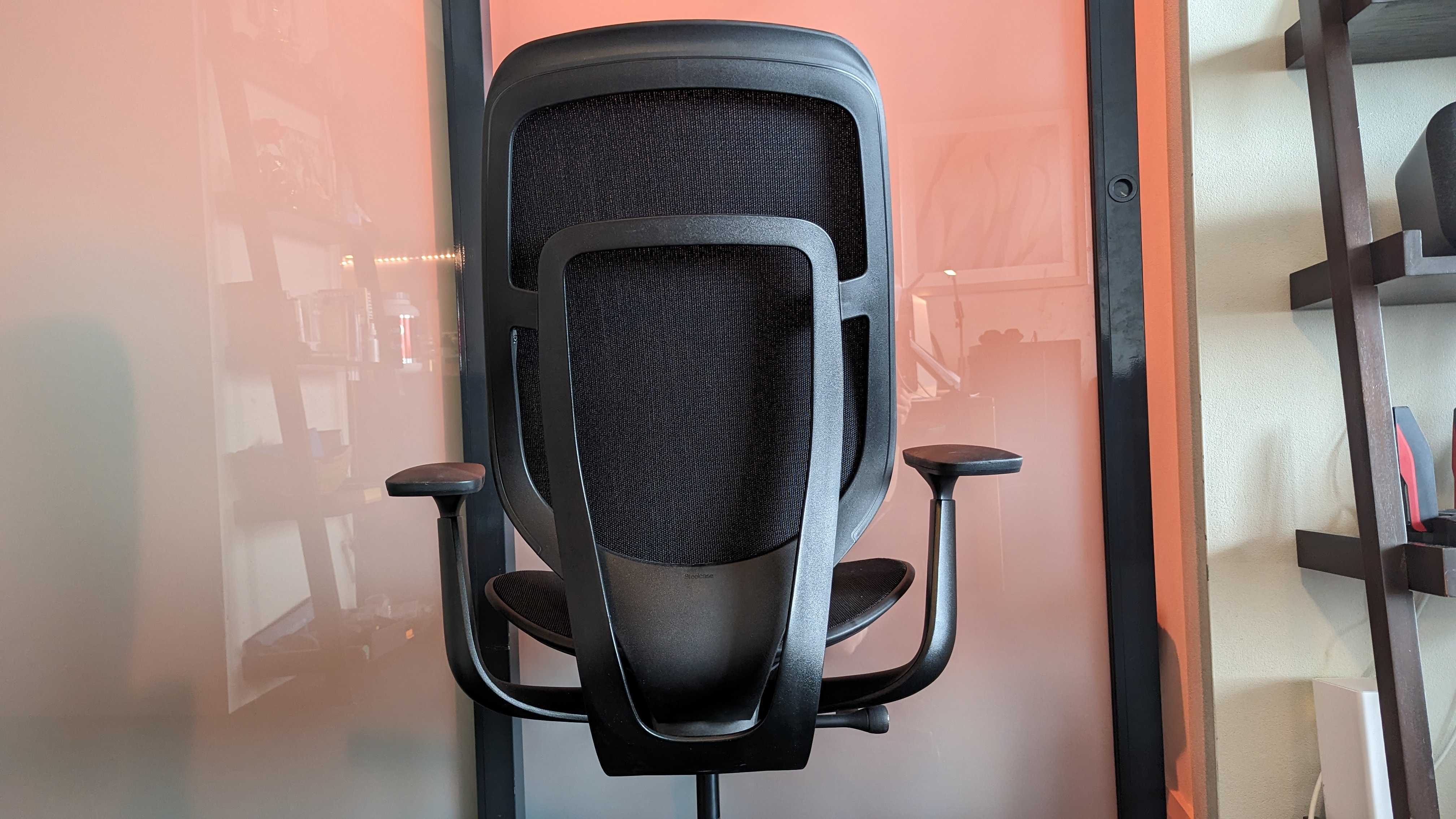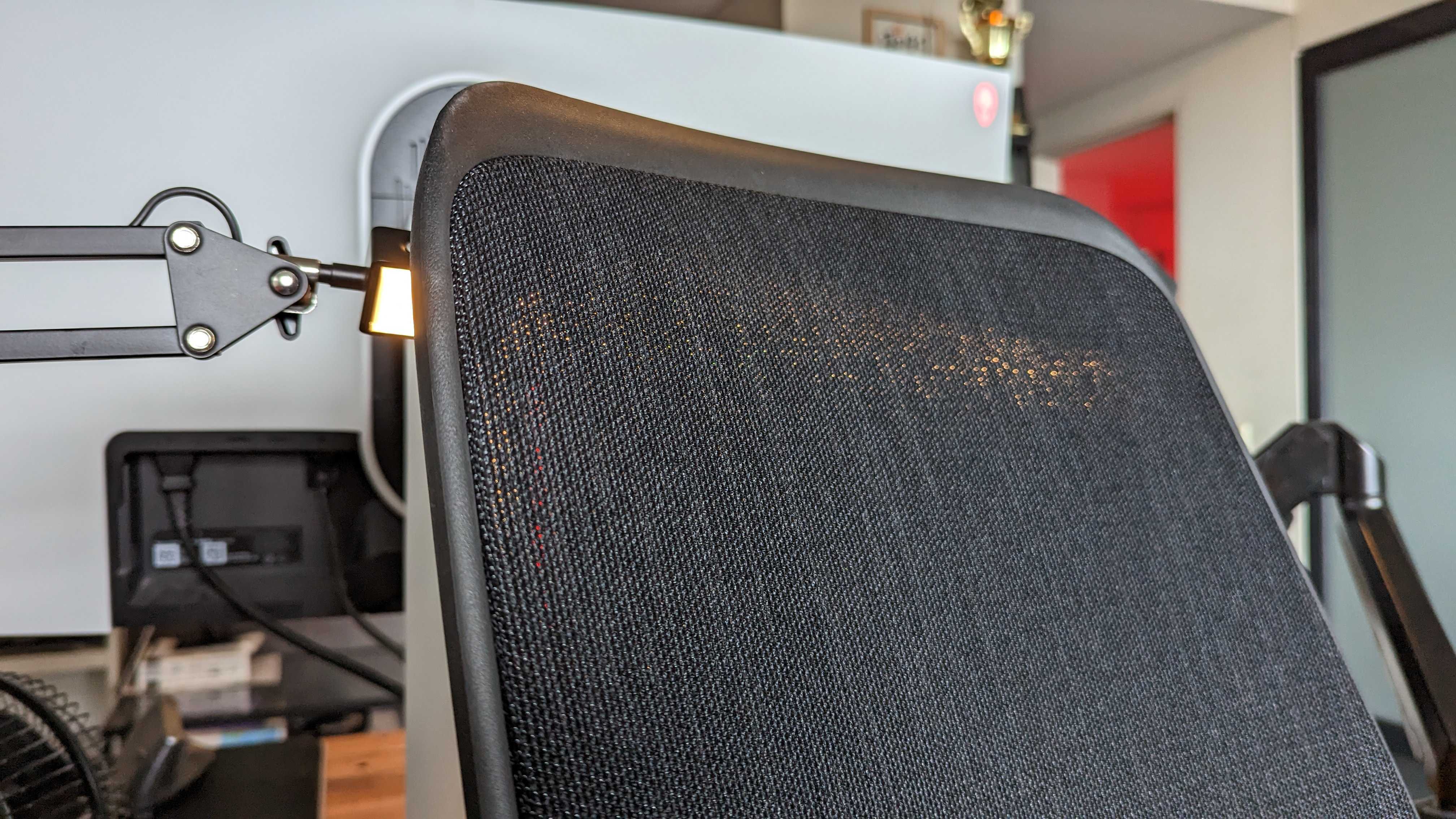Steelcase Karman review: the bendy, flexy seating surprise
Take that, rock-hard rigid gaming chairs


The Steelcase Karman sports a unique mesh back, plus a hybrid mesh-cushion seat pan for comfort and breathability. But its biggest benefit is the flexible frame that moves with your body. It feels a little odd at first, but once you relax into this engineering marvel, other chairs seem stiff by comparison. Dare we say... it's the chair you wear.
-
+
It flexes with your body
-
+
Mesh breathability
-
+
It's a good-looker
-
-
Cushioned base isn't really very soft
-
-
It might feel weird to some
-
-
Avoid if you want firm back support
Why you can trust T3

If you peruse the Steelcase range on its site (select your region from the top left), it becomes clear that the company is very much design and engineering driven. There’s a chair there of just about every type, and there’s an obvious care that’s been put into making each one a great execution of its particular design ethos. They’re mostly all straightforward and there are few eyebrow-raising surprises.
Enter the Karman. This is the most radical chair, I think, in the Steelcase range. It may not look so from the pictures, but this one embraces a concept that’s very different. Can this fresh thinking provide the comfort and posture health you’re looking for, though?

Steelcase Karman: Price and availability
There are a total of four choices for the Karman, split across a 'Standard' and 'Premium' models. For standard ($1,072 / AU$1,999 / SG$1,999; UK pricing TBC ) you can have Black Intermix Opaque (black frame and mesh) or Peacock Intermix Opaque (teal mesh, white frame) color options.
Then there are the 'Premium' models ($1,277 / AU$2,499; UK price TBC). These are structurally identical to Standard, but feature hubless casters (wheels). The colorway choices are Red-Blue Shift (black frame, with a unique color-shifting mesh material that gives the appearance of changing purple gradients as you look at it from different angles), or Black Opaque Mesh (a golden Matt Brass frame, with black mesh).
The Steelcase Karman is available now in the US. Australians in Sydney and Melbourne can also purchase it now, with other cities Down Under to follow. Sydney and Melbourne also have showrooms where you can try the Karman for yourself. The Karman is not yet available in the UK, though it's expected to launch there later this year.
Steelcase Karman review: Design and setup

The Karman is delivered fully assembled in most markets that Steelcase operates in, with just a plastic wrapping around it. The total time elapsed from it rolling in your front door to sitting at your desk is about one minute. A small pamphlet is attached that explains the adjustments, and that’s setup covered. Too easy.
To the design then, and this is where the magic happens. The key is that the Karman is designed to flex with your body as you shift around. The frame back is made from a glass-filled nylon material that yields as you move. And not just the back, either. If you shift around in the seat – leaning into one corner for example – it flexes with your body providing support in whatever position you decide in the moment your body wants to be in. Steelcase calls this tech ‘Liveback’. The back flexing is more pronounced than it is with the seat pan. If you shift from side to side, the shape adjusts, so the support is always there, no matter how much of a seat squirmer you are.
Get all the latest news, reviews, deals and buying guides on gorgeous tech, home and active products from the T3 experts
Examining the construction, it’s assembled from just a few basic pieces. The back frame connects to the base, and is supported by another piece that runs down the center of the back. Even though there’s several pieces making up the frame, they’re all affixed to each other, so the entire chair back and seat act as a single structure that moves with you, acting like a big spring – yielding as you move – and returning to the standard position as you straighten up.
This is all possible because it uses a mesh backing which easily reshapes itself with the frame as it alters its form, and is what makes this innovation actually function. The seat material is a hybrid of the same mesh material, with cushioning underneath it.
Because the entire chair is essentially a big body-conformal spring, there’s minimal adjustment options compared to other chairs and, as I discovered, that’s just fine.
Steelcase Karman review: comfort

When first I sat upon the Karman, two things struck me. First, this thing is comfortable, and secondly, that I was going to break it.
The light weight creates a sensation that it’s a delicate beast – it comes in at just 13kg. As a comparison, a Herman Miller Aeron weighs in at just under 20kg, and a typical gamer chair crushes the scales at around 23-36kg. Despite the light weight, the Steelcase Karman is rated to handle a seater's weight of up to 350 pounds/160 kilograms.
It’s easy to mistake the flexing as a cheap and flimsy design, but once you’ve gotten past that idea, which most of us have baked in from a lifetime of using regular chairs, you get more into it. Literally. I’m fairly large at 6ft 2in, and weigh about 80kg, but the degree of flexing felt just right. There’s no adjustment for stiffness, so Steelcase has obviously settled on a particular strength and tension in the frame that allows it to do its thing across a wide band of body types.
The end result is the feeling that the chair is an extension of your back – and not something rigid you’re propped against that perhaps creates pressure points as you change position, making it a game of you having to conform to the chair. With the Karman it’s the other way around.
I come from 20 years of sitting on an Aeron, so was most interested to see how this mesh felt. It’s… different. The mesh material is something Steelcase calls ‘Intermix’. It’s not as thin as an Aeron’s mesh, and the ventilation isn’t the same either, but air definitely passes through it, so mesh it is. Also unlike an Aeron’s mesh, the Karman has a soft fabric surface, the idea being to give you the comfort of a cushion chair with the breathability of mesh.
Reviewing this through a hot Sydney summer with a big Dyson fan planted next to me to keep me alive, the air was definitely flowing through and sweat had no chance to form on my bare WFH back. Nice.

The seat uses the same material, but with a cushion under the center of it. There’s enough mesh area around the sides to let the air through, with the cushion being smaller than the seat pan and placed in the middle, so you do get the best of both worlds. The seat wasn’t as soft as I thought it would be, and doesn’t spread the bum fat out like a pure-mesh Aeron but, on the flip side, it keeps your rear end nicely planted while your back does most of the flexing.
As mentioned, there’s almost no adjustment. The design wouldn’t work if there was recline or seat pad position adjustments. It needs to be effectively a single-piece design in order to work. You do get a lever that controls how far back the chair reclines, as well as height and the ‘4D’ armrests, but that’s it, and that’s all that’s needed.
The armrests are absolutely gold. They swivel, rotate, slide back and forwards, as well as raising or lowering. I found myself almost subconsciously adjusting the rests with my elbows as I moved around through the day to maintain the best hand-on-keyboard position. It’s pretty magical once you gel with the Karman, and just relax into how it works.

Steelcase Karman review: verdict
So, should you buy the Steelcase Karman? We say yes. Though, with the caveat that the Standard model is somewhat reasonably priced, and that's what we're recommending. The Premium model adds too much to the cost and we don't feel the gains are in line with the price bump for those models.
While we think the hubless wheels are pretty cool, the price premium reminds us of the famously ... ambitious... pricing Apple tried on with its $700 Mac Pro wheels. It's too much to pay, unless the boss is paying and they don't mind. The color-shifting mesh is also pretty neat, and we understand that material isn't cheap to source.
But for the Standard model, we feel the price is reasonable, though it is edging into Aeron territory, while the Premium models are definitely in the Aeron price zone, which will certainly be a consideration if you're wanting a 100% mesh chair.
The Karman offers a very unique form of comfort. It works, it’s not a gimmick and this chair is damn comfortable. It’s meshy enough to keep you cool on hot days, and it’s supportive with zero sore spots. It looks classy, with no ostentatious adornments of design excess – indeed the shape of the frame is really quite artful and it’d look great by the hundreds in an office environment, as well as at your desk at home.

Ben's been a tech editor since 1994, so he understands with some well-accumulated perspective just what makes gear good. Ben has launched a few magazines in his time, including the legendary PC PowerPlay and Atomic mags. As well as being the Australian T3 editor, Ben also puts together an issue of APC magazine every month. It's the second longest-running PC mag in the world. Fact. He's a PC gamer and sim racing enthusiast and hasn't owned a console since the Sega Megadrive.